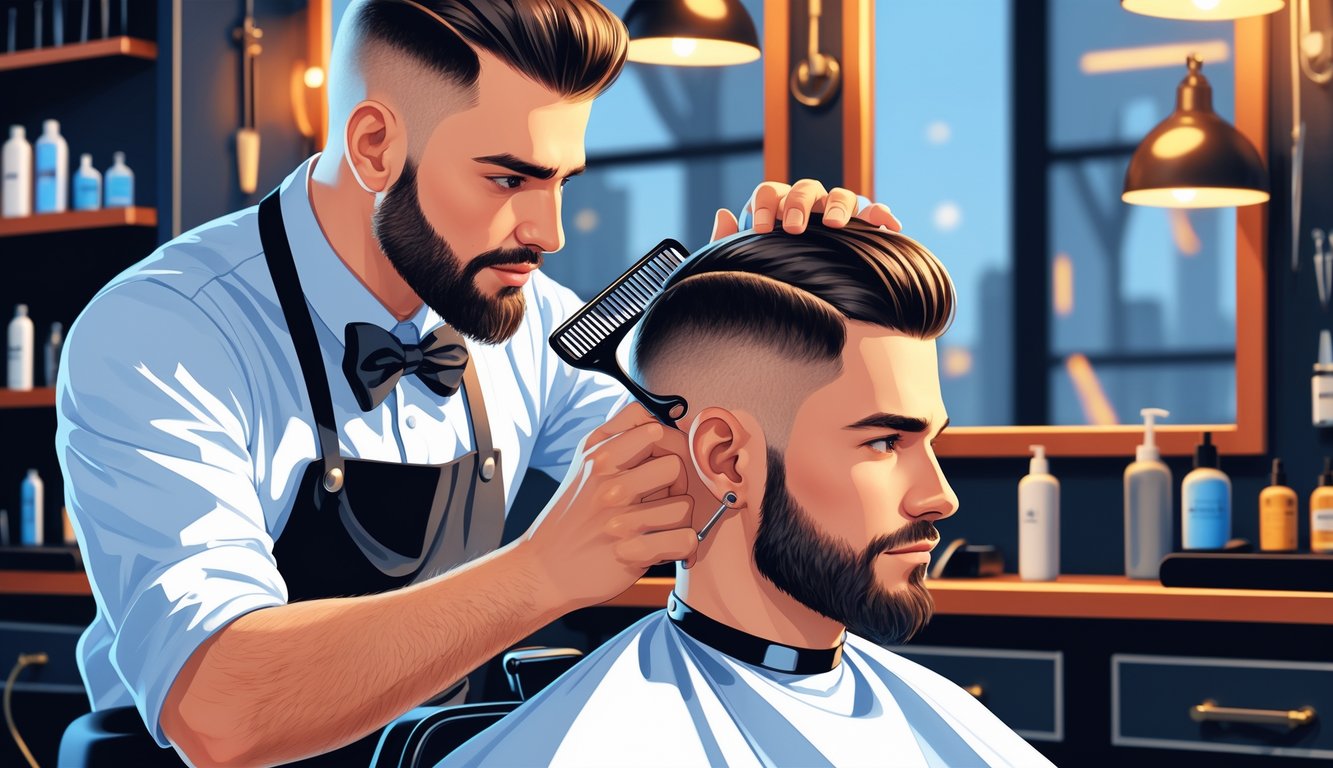
Signs of a Quality Razor Cut
A really good razor cut? I spot it instantly—looks clean, soft edges but still sharp, and the hair just sits right. No weird cliffs, no dead ends. Ted Gibson (yeah, the celeb guy) once said, “Quality razor cuts create seamless transitions,” and honestly, the regrowth should prove it. Even after three weeks, if the nape line looks like a ferret chewed it, something went wrong.
Guides and blend points? Should be invisible, even when I’m poking around with my carbon comb. It’s kind of unfair—hair parts whichever way and still looks effortless, not like a mess of old sweater threads. Maybe it’s subtle, but under those harsh shop lights, I see that soft, diffused finish—that’s someone who’s spent years perfecting their feather game.
Nobody talks about this, but on a packed day, a perfect razor regrowth makes my life easier. No weird drag, less breakage, and I can cut it way faster. Happened last Thursday: client came in after a killer razor cut, and I was done in half the time. That’s the kind of pro skill nobody appreciates, but I notice.
Common Regrowth Issues
What still drives me nuts? Crooked regrowth lines that never match up—if your part keeps drifting every time you wash, the last cut probably faked symmetry. Choppy ends, blunt bits sticking out after a week, or random tufts at weird angles—these all scream sloppy blade work or shaky hands. Most of the time, it’s because someone skipped blending. It’s like skin care: consistency actually matters, but nobody believes it until regrowth tells on them.
Sometimes I’ll spot fine, frizzy regrowth next to flattened parts—usually means the last barber switched tools halfway through or just gave up. Or maybe they went too hard with the razor near the crown, and now there’s a patch I can’t blend. Expensive product won’t hide it once the hair grows out. If your “fresh cut” promised invisible layers but I’m seeing ledges by week two, that razor cut was not what you thought.
Here’s a table for the visual types:
| Regrowth Clue | What It Tells Me | Fixable? |
|---|---|---|
| Crooked regrowth lines | Poor sectioning, weak guides | Usually yes |
| Random tufts/angles | Uneven razor technique | Mostly yes |
| Excess split ends | Dull razor, rushed cut | Sometimes |
How Razor Cuts Affect Hair Texture and Regrowth
So you’re sitting in the chair, staring at yourself, and honestly—sometimes I think stylists just make up stuff about “movement” and “blunt ends.” But then, weeks later, my bathroom mirror shows the truth. Razor cuts do weird things to how hair feels and acts, and if you care about your hair lying flat or sticking out, it’s kind of a big deal.
Changes in Hair Texture
What still gets me about razor cuts is how my hair instantly feels different—lighter, but somehow more chaotic? If you’ve ever run your hands through post-razor hair, you know what I mean: it’s thinner, kind of frayed at the ends, not like a clean scissor chop but more like angled, unpredictable bits. Every barber with half a clue can spot that “texture”—they call it that, but to me it’s just fluffy, sometimes jagged, especially at the ends.
Most stylists will say razor cuts work best on healthy straight or wavy hair. I always warn people with curly or fragile hair—razors can make frizz or roughness way worse, especially if you’re lazy about conditioner or smoothing serum. You can’t change your follicle, though; dermatologists and Wellwisp both say genetics win, no matter what tool you use.
Oh, and then there’s what I call the “bedhead amplification effect.” Razor ends snag on sweaters, tangle up in humidity, and sometimes look amazing—until a gust of wind hits and suddenly you’re fighting with your hair all day. It’s texture you’ll either love, or you’ll end up buying every texturizing spray in the aisle just to keep it under control.
Managing Split Ends and Breakage
So, let’s just say it: nobody’s honest about razor cuts and split ends. I mean, you get a razor cut, and four weeks later, it’s like—wait, is that more split ends than before? I swear, every stylist has some secret move to hide the mess, but honestly, razors slice the cuticle at a weird angle and rough things up more than scissors ever could (I checked, hair pros back me up). More friction, more breakage, more “oh, you’re back already?” at the salon.
Breakage doesn’t show up all dramatic; it’s sneaky. One day you’re lint-rolling your black shirt and, surprise, it’s covered in see-through hair bits. Deep conditioner? Meh, never does it for me. Creams help a bit, but unless you’re that person who wraps your hair in silk scarves every night or swaps out your pillowcase for satin like it’s a spa, don’t expect magic.
There’s this weird paradox—razor cuts make old ends look better for a hot minute, but then you get all these fine, wispy breakoffs. It’s not either/or, it’s both, and if I had a buck for every client who’s shocked by weird fuzzy regrowth after a razor cut, I’d retire and never sell another “split end serum” again. Get trims. If you’re determined to keep the razor thing going, pile on the protective leave-ins—my go-to’s that middle-shelf argan oil, but honestly, barbers will hype whatever they like best that week.
Barber Insights: Maintaining That Razor-Sharp Look
Hair doesn’t care about your plans. Clients obsess over keeping that jagged, crisp look, then act surprised when it’s gone in two weeks. Product, timing, a barber who actually pays attention—none of that saves you if you ignore the boring details between cuts.
Recommended Aftercare Tips
I keep grabbing my microfiber cloth—seriously, do people just not own these?—because leaving water on your scalp or blade? Bad news. Rust, irritation, disappointment, all that. I tell everyone: don’t just rinse and run. Product gunk sneaks up, and suddenly your hair’s flat and sad. A little mild soap, hot water, then dry it all the way (no, not just a lazy towel swipe). It matters.
Hydration’s not just for your face, either. Leave your hair thirsty after a razor cut and watch it snap off or go fuzzy in a week. Most clients barely bother with hair oil, but hydrated hair cuts easier and grows out less frizzy (that’s straight from Salt City Barber’s blog). Also, don’t store your tools or your head over a steamy shower. Unless you’re into split ends. I’m not.



